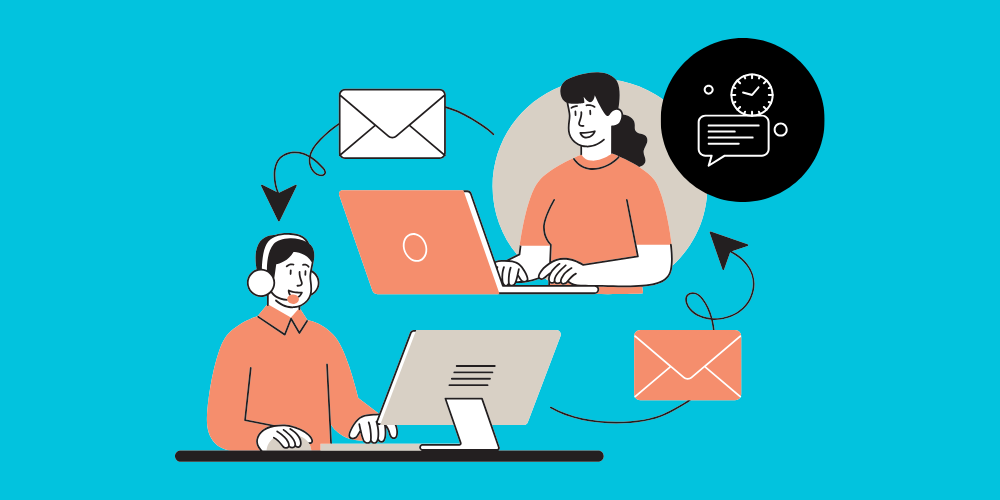Email marketing remains one of the most powerful tools in digital marketing. However, sending the same generic email to your entire audience is no longer effective. To stand out in crowded inboxes, advanced newsletter segmentation strategies are essential. Segmentation allows you to tailor your messages, making them more relevant, engaging, and impactful. Here’s how to boost your open and click rates by embracing segmentation.
Why Generic Emails Fail in 2024
With inboxes cluttered by promotional messages, personalization has become a non-negotiable. Recipients are quick to delete emails that don’t resonate with their needs or interests. In fact, according to a report by HubSpot, segmented email campaigns have a 14.31% higher open rate and a 100.95% higher click-through rate than non-segmented ones.
Generic emails:
- Lack personalization: One-size-fits-all content fails to connect emotionally.
- Miss timing: Emails sent without considering recipient behavior often go unopened.
- Ignore preferences: Audiences prefer content tailored to their interests and actions.
The Key to Effective Segmentation
Segmenting your email list means dividing your audience into smaller, manageable groups based on specific criteria. This can include demographics, behavior, purchase history, or engagement levels. Here’s how you can elevate your email marketing game with actionable strategies:
1. Leverage Behavioral Data
Behavioral data provides insights into how users interact with your website, emails, and content.
- Example: If a customer abandons their cart, send a reminder email within 24 hours offering a discount or free shipping.
- Tools: Use platforms like Klaviyo or HubSpot to track user actions and automate follow-ups based on behavior.
Pro Tip: Monitor recurring patterns like seasonal purchases or repeat visits to a specific product page, and create campaigns targeting these behaviors.
2. Demographic-Based Segmentation
Not every product or service appeals to everyone. Segmenting by demographics ensures your message reaches the right audience.
- How to do it: Divide your audience by factors such as age, location, or gender. For example, send promotions about winter wear to users in colder regions.
- Actionable Tip: Use location-based triggers for event announcements or flash sales that cater to specific time zones.
3. Engagement-Level Segmentation
Not all subscribers are equally engaged. Identify your audience by their interaction level to optimize your approach.
- Active subscribers: Regularly interacting users. Send them exclusive deals or VIP access content.
- Inactive subscribers: Re-engage them with win-back campaigns, like, “We Miss You! Here’s 15% Off to Shop Again.”
- Tools: Platforms like Mailchimp or ActiveCampaign let you segment by engagement levels automatically.
Pro Tip: Avoid bombarding inactive subscribers with too many emails. Instead, offer value-packed content to reignite their interest.
4. Purchase History Segmentation
Understanding a customer’s buying habits helps you offer hyper-relevant content.
- Example: If a customer recently bought workout gear, follow up with recommendations for related accessories like water bottles or gym bags.
- Trends to watch: Cross-selling and upselling campaigns are increasingly successful when based on purchase patterns.
Pro Tip: Personalize the subject line. For example: “Complete Your Fitness Gear Collection with These Must-Haves.”
5. Dynamic Content Within Emails
Dynamic content allows you to send a single email with tailored sections that change based on the recipient’s segment.
- Example: An e-commerce store can showcase men’s clothing to male subscribers and women’s clothing to female subscribers within the same email campaign.
- How to implement: Tools like Salesforce Marketing Cloud and Braze enable dynamic content integration seamlessly.
New Trends in Email Segmentation
- AI-Powered Segmentation
Artificial intelligence is revolutionizing segmentation by analyzing massive datasets quickly and predicting user behavior. AI tools like Persado help create hyper-personalized campaigns at scale. - Real-Time Personalization
Delivering emails based on real-time data, such as the user’s browsing activity or current location, can significantly boost engagement. - Micro-Segmentation
Instead of broad categories, micro-segmentation dives deeper. For instance, targeting users who visited a specific product page three times but didn’t purchase. - Emotional Segmentation
Craft emails that resonate emotionally by understanding what motivates your audience, such as aspirational messaging or fear-of-missing-out (FOMO) tactics.
Crafting Irresistible Segmented Campaigns
1. Write Personal Subject Lines
Subject lines can make or break your open rates. Use the recipient’s name, location, or interest to grab attention.
- Example: “John, Your Summer Travel Deals Are Here!”
2. Timing Matters
Send emails when your audience is most likely to engage.
- Actionable Tip: Test send times and track performance to determine the best times for different segments. Also read “Timing is Everything: Are You Sending Emails at the Wrong Hour ?.”
3. Offer Exclusive Content
Make your segmented audience feel special by offering exclusive deals or early access to sales.
Pro Tip: Create urgency with limited-time offers, but ensure they are relevant to the recipient.
Case Study: Netflix’s Segmented Email Success
Netflix sets a gold standard for segmentation. By analyzing user behavior, Netflix sends personalized recommendations tailored to individual viewing habits.
- Impact: Their segmented email campaigns consistently achieve higher engagement and retention rates.
- Key Takeaway: By focusing on audience behavior and preferences, you can create campaigns that feel tailor-made for each subscriber.
Final Thoughts
People do not open or engage with generic content and emails anymore. Understanding and accepting this fact can make you adapt to the new methods that could work. By understanding your audience, leveraging data, and adopting new trends, you can craft campaigns that resonate deeply and drive action.
Stop sending generic emails. Instead, deliver experiences your subscribers look forward to, and watch your open and click rates soar. It’s time to make segmentation the cornerstone of your email marketing strategy!




